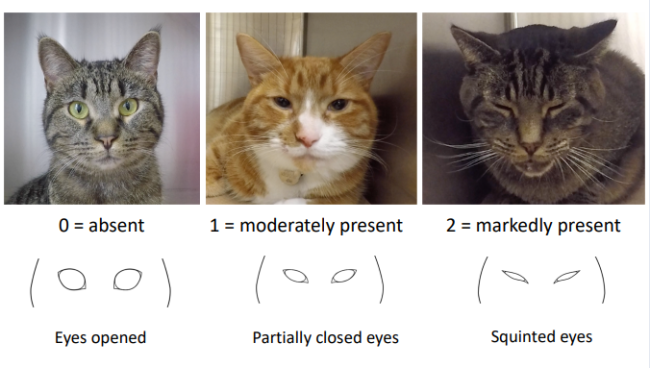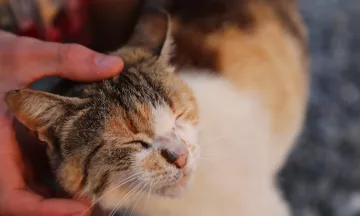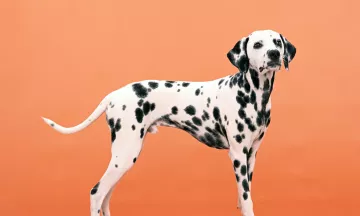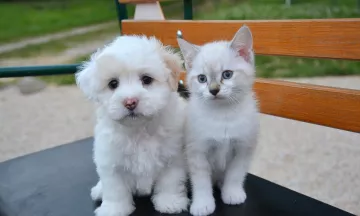What does 'cat body language' mean?
Cat body language refers to the way in which a cat uses physical posture and movement to show what they are feeling.
A cat expresses a lot of information through its body language, though it can be subtle and tricky to understand at first. However, with practice, it is possible to become skilled at understanding what a cat wants and feels.
Understand a cat's body language will help you to create an environment that is safe and comfortable for your cat. As such, cat owners and cat sitter should learn this important skill.
How can you tell when a cat is calm?
A calm cat will have its ears pointed upward, its eyes comfortably open and its tail relaxed and not swishing. You can tell a cat is very relaxed with you if they squint or slowly blink their eyes in your direction. Try mirroring this back at your cat. This is cat body language for 'I am relaxed and comfortable with you'.
A calm cat will still be responsive to sounds around them. For example, you will still see them move their ears towards sounds, or widen their eyes if they see a movement. Cats naturally keep a close eye on their surroundings.
How does a cat say 'hello'?
A cat says hello in a few different ways, and each has its own meaning.
Firstly, your cat might greet you by giving you a rub with their cheek. However, this is more of a scent-marking than a greeting. Your cat is making you a familiar part of its environment, as it also might do with furniture or doorframes. Similarly, your cat might sniff or touch you with its nose, which is also a way of gathering scent information.
Secondly, a cat might give you a head bump, also known as 'bunting'. This is a friendly sign of familiarity which originates from nursing during kittenhood.
Thirdly, a cat might approach you with its tail up high or with a 'meow'. Not only is this a form of greeting: it also shows your cat may want something with you. Cats rarely meow to other cats but can make hundreds of meow sounds for us humans. This greeting might also show your cat is hungry or wants you to open a door.

Does your cat sometimes roll over and show you their belly? This means your cat feels safe with you, as a cat will only do this if they feel comfortable. But beware, as this does not mean your cat wants its belly rubbed. You might get a swipe if you aren't careful.
What is a cat's body language like when they're scared?
A scared cat will want to appear as flat and small as possible. As such, you will notice their ears held back flat, their body close to the ground and their tail held low and folded around themselves. Alternatively, their tail might be stiff and puffed up like a brush. Their whiskers will also be pressed back flat against their face.
How does a cat show they are annoyed
If you see a cat swishing its tail, this means they are getting cranky. This might begin gently, then get more and more rigorous if the irritation doesn't stop.
This is a sign that your cat is frustrated and wants the situation to change. As such, pay attention and give your cat space. They want to be left alone.
Angry cat body language

If a cat continues to be irritated, this might lead to anger. A cat might turn out their ears, arch its back and puff up its tail to look bigger and tougher. Furthermore, their whiskers may point forward and the cat might hiss. Leave them alone when they are in this state,
The body language of a cat in pain
It isn't obvious when a cat is in pain. They won't meow sadly or whine. As such, it's essential that a cat sitter or cat owner knows how to spot a cat in pain.
An important thing to remember is that an unhappy cat's behaviour is relative to how they normally behave. For example, are they hiding more than normal? Do they withdraw from touch, when they normally love a pat? Do they stay huddled in a ball all day instead of stretching? These are signs that your cat might need to go to the vet.

The first sign that a cat is in pain is that it will withdraw. For example, they might hide, or huddle with hunched shoulders and a lowered head. The cat will tightly shut their mouth, making its face look a bit more pointed.
Another sign that a cat is in pain is that it will flatten and turn out its ears. They may also half-close their eyes. Lastly, the cat will huddle all day into a small, curled up posture. It is less likely that they will be stretched out in a relaxed posture.

Evangelista, MC, Watanabe, R., Leung, VSY et al. Facial expressions of pain in cats: the development and validation of a Feline Grimace Scale. Sci Rep 9, 19128 (2019)
How to keep your cat happy?
A happy cat is able to display its natural body language and behaviour on its own terms. As such, pay attention to the signs of happiness, stress, annoyance and calmness. By doing this, we can notice what your cat needs in its environment to be happy. For example, perhaps your cat likes a busy household and experiences separation anxiety when left alone. On the other hand, your cat might like peace and quiet. Listen to your cat's body language and you will get to know their needs and personality like a real cat whisperer!
Do you need extra help caring for your cat? Then book a friendly cat sitter at Pawshake.
The pictures with illustrations of the frightened cat come from the website www.felinegrimacescale.com






